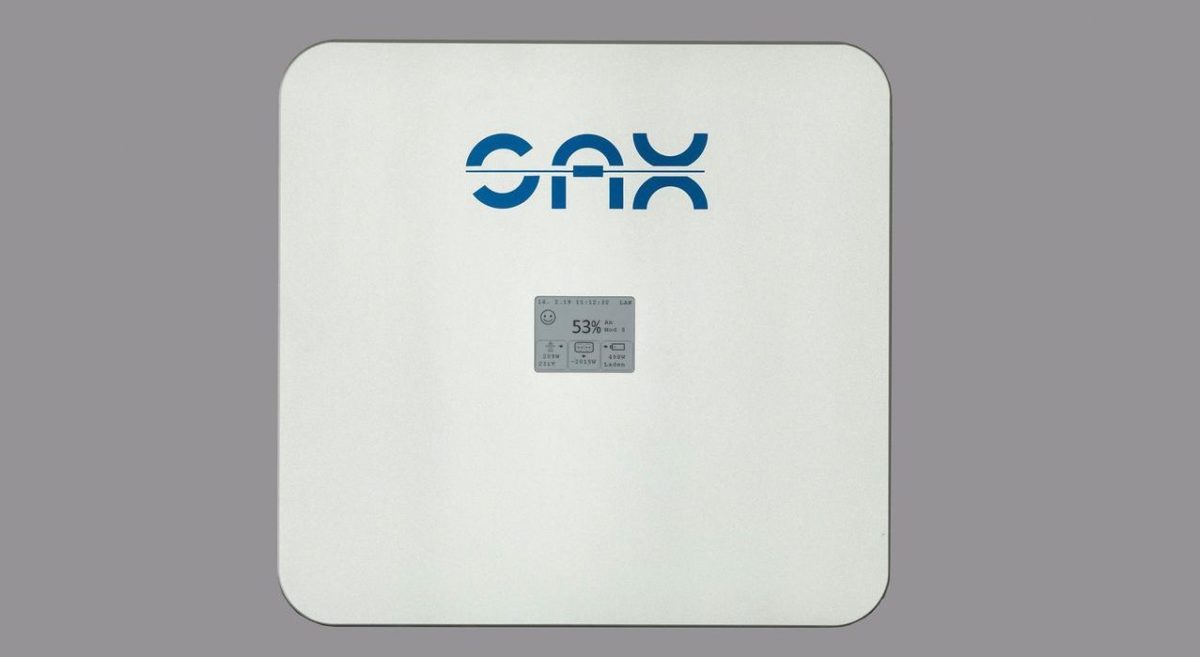You can get a negative powersupply by changing the center tab. This doesnt have to be the negative of the first battery.
A battery and inverter are ‘floating’, there is no reference to ground.
If you serieconnect 2x12v to make a 24v battery, your just using the - from the first and the + from the second battery, and connect the other 2 together to create a serie string.
Yes, I see. So you would also be able to get split-phase output ‘for free’ (each 120V output leg is being independently generated). I suspect this is what SAX power is doing.
However if you’re using the wire beween those 2 cells to create a third point, acting as 0v, the first battery will provide +12v, while the second battery will provide -12v
So it will work as a dual feed powersupply
If you serie connect many 3.2v cells to get 220v (36x3.2v in series) and use the connection between cell 15 and 16 as your reference (0v) you end up with + and - 115v
Than its just a matter of switching between both with 60hz and you have a 115v square wave feed, which works with a resistive load.
Adding a cell switcher would create a modified sine wave with steps of 3.2v. Add some capacitors and filters to smooth the these steps and you basicly have an inverter.
I suspect this is exactly what they are doing.
However it does require some decent cell mangement since you are discharging the individual cells at different rates and periods.
They make a big deal about exactly that. They monitor all cell SOCs and make decisions about which specific cells to switch into and switch out of individual ‘steps’ based on their (relative) SOC (so it is supposed to be dynamically self-balancing).
Note: calculations are not fully correct, the peak of a sine wave is sqrt2 higher than the rms rated voltage but you’ll get the idea
Yes, I figured that was a detail not getting sidetracked by…
A typical inverter is either low frequency or high frequency.
A low frequency inverter uses mosfets to create a sine wave with 50/60hz which is fed into a transformer to boost to the required output, just like a regular substation or grid works.
Disadvantages is it requires heavy transformers (=expensive), benefits it can handle surges better and is solid
Yes, understand.
High frequency inverters use much higher frequencies, typical 100khz or so. This causes the transformer to be much more effective, so they can be much smaller. Cheaper and less weight. Disadvantages they can’t handle surges as good as low frequency ones.
Yes, I own a high-frequency PSW…
For regular use, high frequency ones are more common due to their price/performance
However, both uses transformers which will cause losses, depending on the load 80-90% efficiency is common. Bypassing this with direct high voltage to sine wave will allow you to get 95+ effficiency I guess.
So so suspect this is exactly what they are doing (and it probably also means absolutely no peak capacity beyond the rated capacity (unless there are heat issues causing them to limit the length of time at various output levels).
These high voltage systems are nice to use as addition to the grid (act as a powerwall), charging with solar inverters (if they are able to see the generated solar someway) or eg charging at periods with low kwh prices (some grid companies offer prices based on the availability - cheap offpeak or with plenty of solar/wind unused, expensive with less available power)
Yes, as a grid-assist hybrid battery, this looks pretty attractive. I wonder if the same ‘staircase’ technology can be used to charge cells as well as discharge?
For offgrid i would prefer 48v or so since thats much easier to handle, safer and allows easy available chargers for solar and so on
As long as you have some AC-coupled power available when the grid goes down, I think this could be attractive for backup power as well, but the issue then becomes where does the grid-simulating sine wave come from in order to activate the AC-coupled inverter(s)?
I suppose if the filtering is gone well enough, this technology could start pushing out power to activate the AC-coupled solar inverters at which point it could begin charging the battery to maintain the simulated grid signal by matching charging power to solar power - load power…
Whether it can throttle-back power try though frequency-shift or voltage shift might be another question, but the basic concept of initiating power ‘push’ before transitioning to power ‘pull’ when there is AC-solar power available seems like it should be possible…
I’m starting to get excited about this. It more truly is an AC-battery compared to slapping a battery charger and an inverter on a DC battery

.

 www.pv-magazine.com
www.pv-magazine.com



